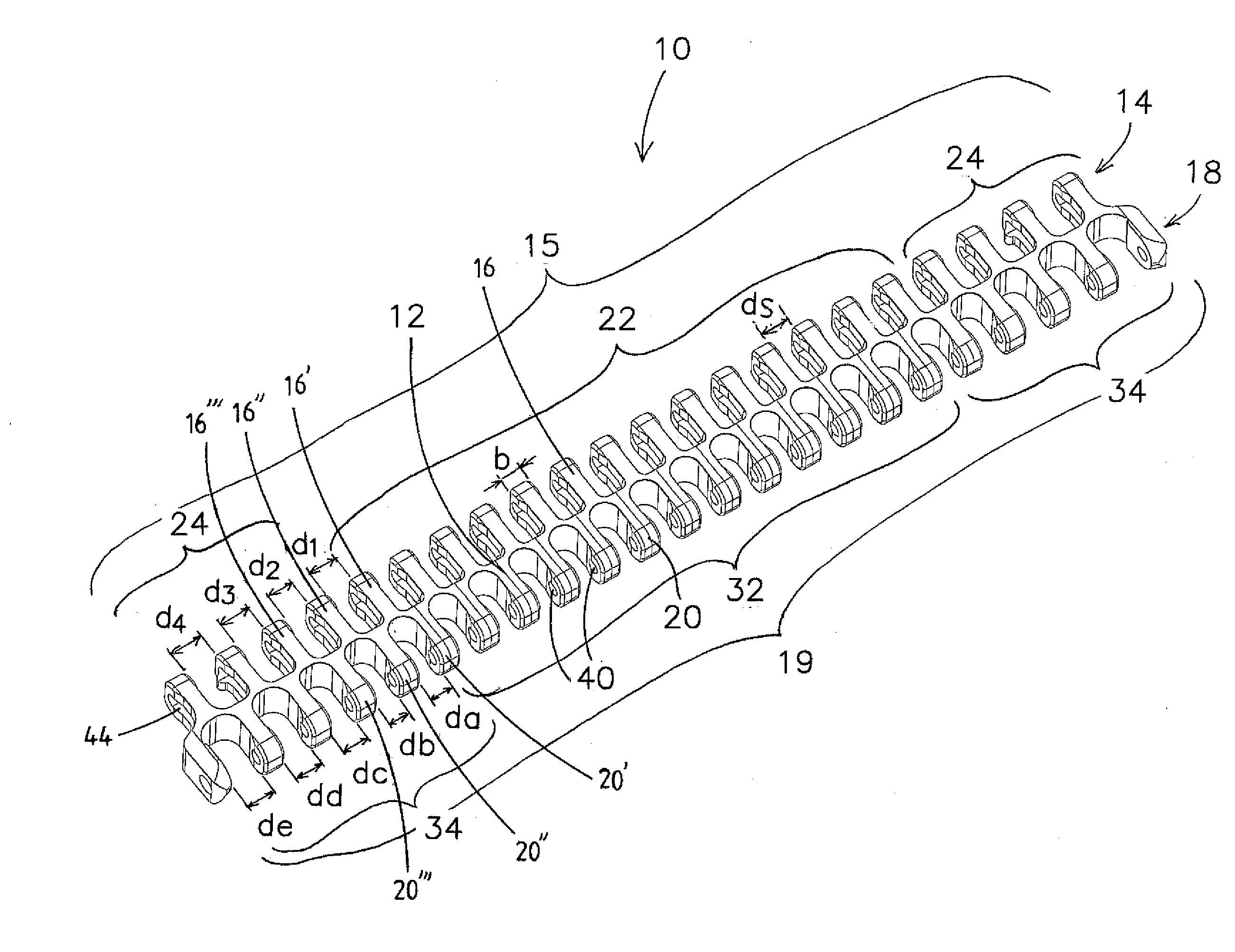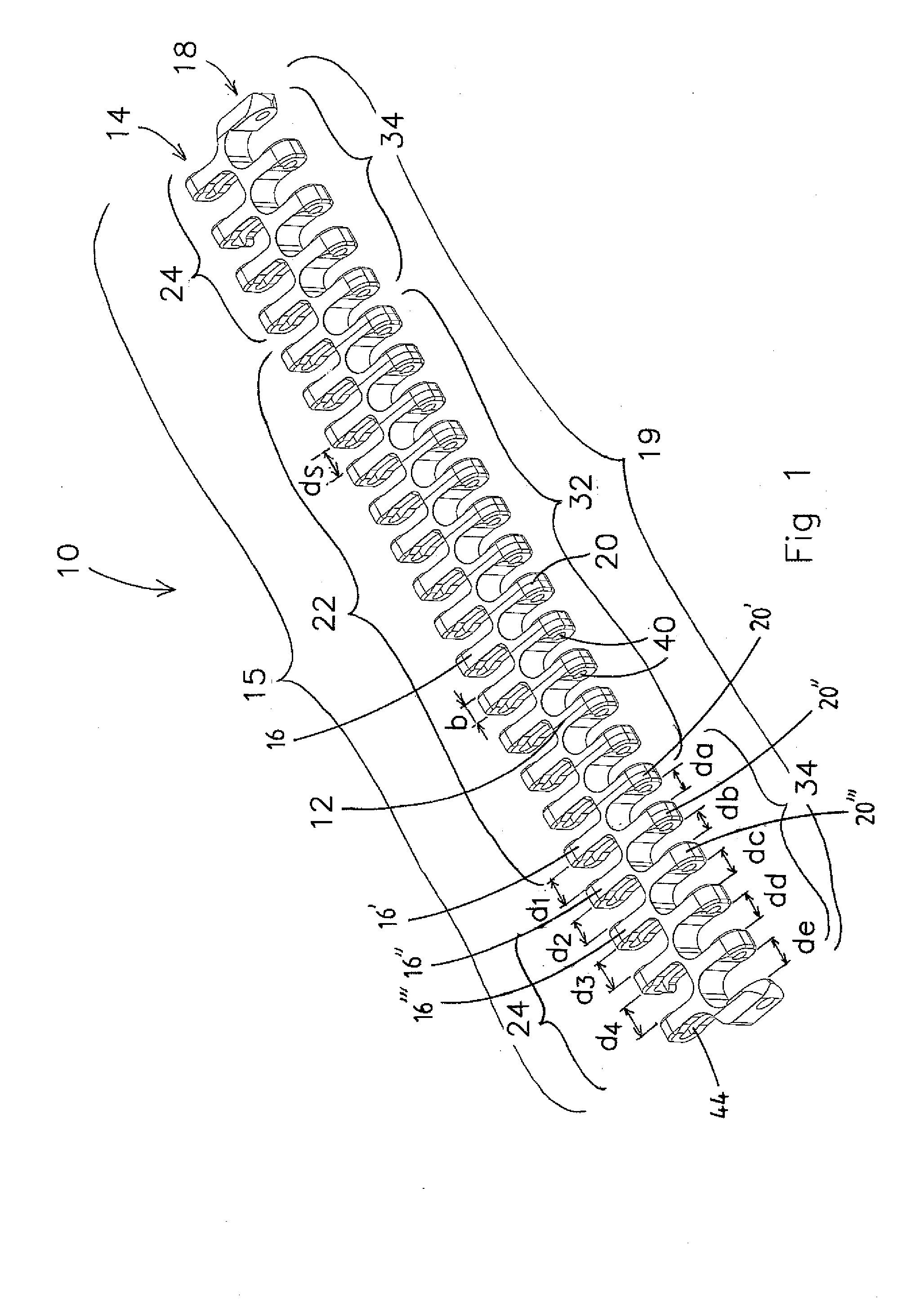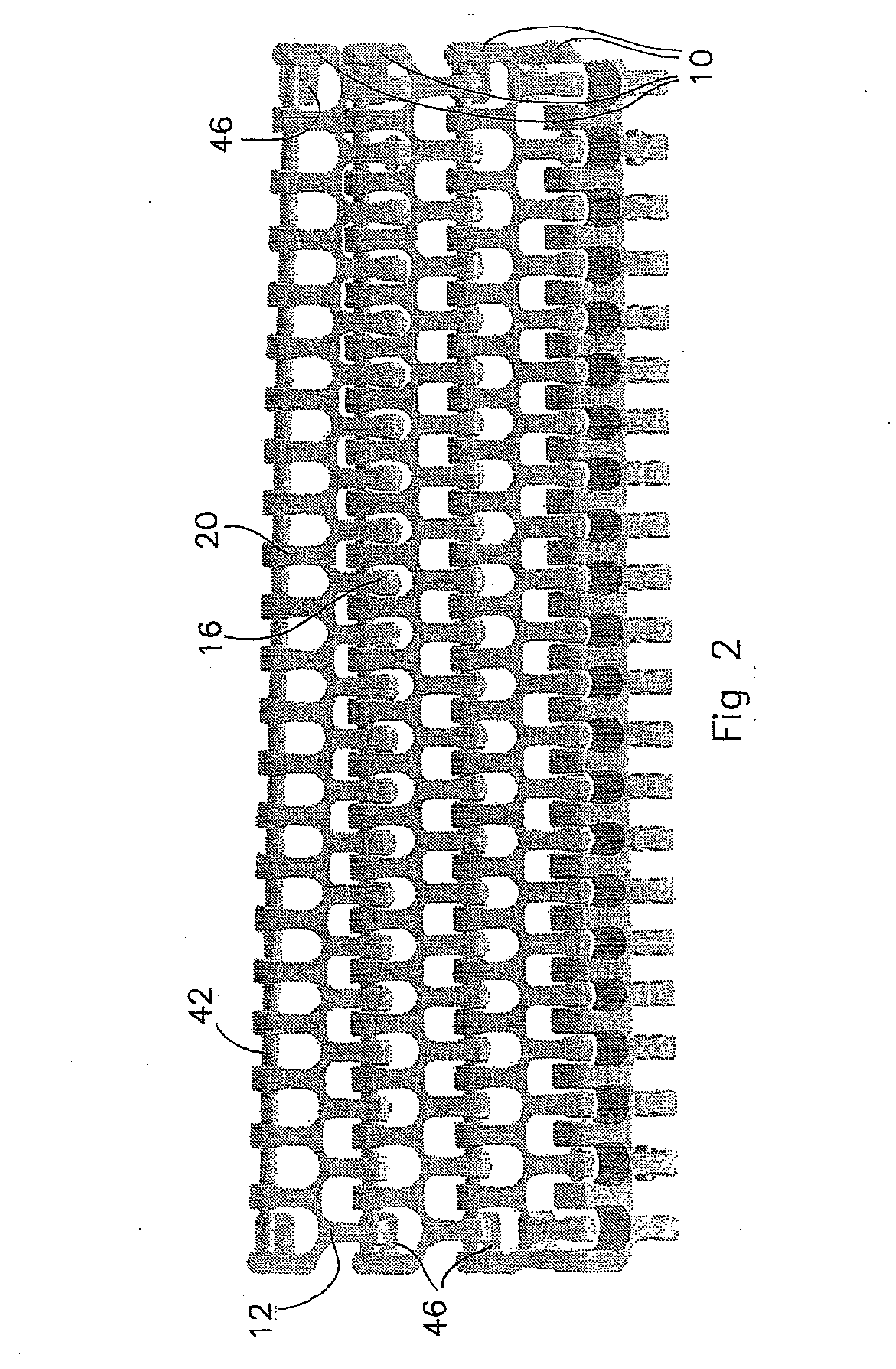Modularly constructed conveyor belt, and module
- Summary
- Abstract
- Description
- Claims
- Application Information
AI Technical Summary
Benefits of technology
Problems solved by technology
Method used
Image
Examples
Embodiment Construction
[0024]The embodiment of a module 10 according to the invention shown in perspective in FIG. 1 comprises a base element 12 having on a first longitudinal side 14 thereof a first set 15 of first fingers 16, and on the opposite longitudinal side 18 a second set 19 of second fingers 20. The fingers 16 and 20 are staggered relative to each other in the widthwise direction. The fingers of a set in this embodiment are all of the same width b. The first set 15 comprises in the centre a second sub-group 22 of fingers 16, which are situated at a standard distance ds from each other. Situated on either side of the second sub-group 22 is a first sub-group 24 of four fingers 16 each in the case illustrated. The distance d1 between the outermost finger 16′ of the second sub-group 22 and the innermost finger 16″ of a first sub-group 24 is greater than the standard distance ds. The distance d2 between the innermost finger 16″ of the first sub-group 24 and the adjacent finger 16′″ of the same sub-gr...
PUM
 Login to View More
Login to View More Abstract
Description
Claims
Application Information
 Login to View More
Login to View More - R&D
- Intellectual Property
- Life Sciences
- Materials
- Tech Scout
- Unparalleled Data Quality
- Higher Quality Content
- 60% Fewer Hallucinations
Browse by: Latest US Patents, China's latest patents, Technical Efficacy Thesaurus, Application Domain, Technology Topic, Popular Technical Reports.
© 2025 PatSnap. All rights reserved.Legal|Privacy policy|Modern Slavery Act Transparency Statement|Sitemap|About US| Contact US: help@patsnap.com



